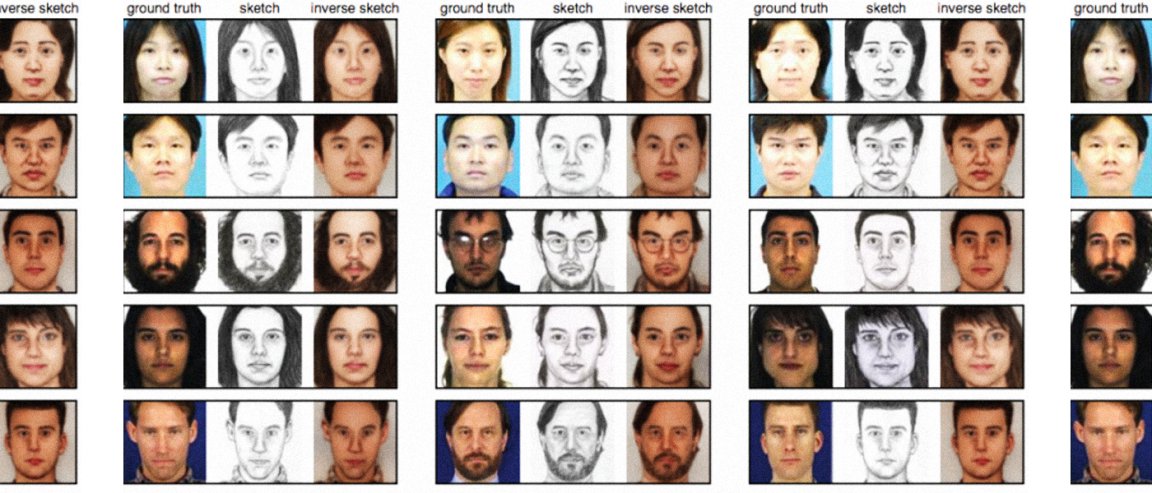
Art Imitates Life
A team of scientists at Radboud University has been working on a model for turning a drawing of a face into a photorealistic face. They are accomplishing this by inverting face sketches to synthesize photorealistic face images using deep neural networks.
The Convolutional Sketch Inversion is available in the online archive arXiv and at the European Conference on Computer Vision in Amsterdam.
It can be used in fine arts, for turning self-portraits into something more akin to a photo. However, most notably, it also has uses in forensics, for turning sketches based on eyewitness accounts into something a photorecognition tool could use, for example.

Working With Algorithm
It works this way, according to scientists Yagmur Guçluturk and Umut Guçlu:
Let’s say that I, scientist, want to teach you, artificial neural network, how to convert sketches (inputs) to photos (outputs). First, I construct a very large dataset composed of sketch and photo pairs. I give you the sketches and ask you to convert them to photos. Randomly, you choose a strategy and give it a go. At first, your photos would not look like the photos in my dataset.
I compare your photos with the photos in my dataset and point out your mistakes. Based on my feedback, you adjust your strategy and give it another go. Gradually, the quality of your photos would improve.
The scientists used computer-generated sketches based on the photos in the CelebA dataset and in the LFW dataset to train the algorithm. The hand-drawn sketches were taken from the CUFS dataset.
Researcher are looking at developing applications in the fine arts and forensic arts world for monetizing their work.